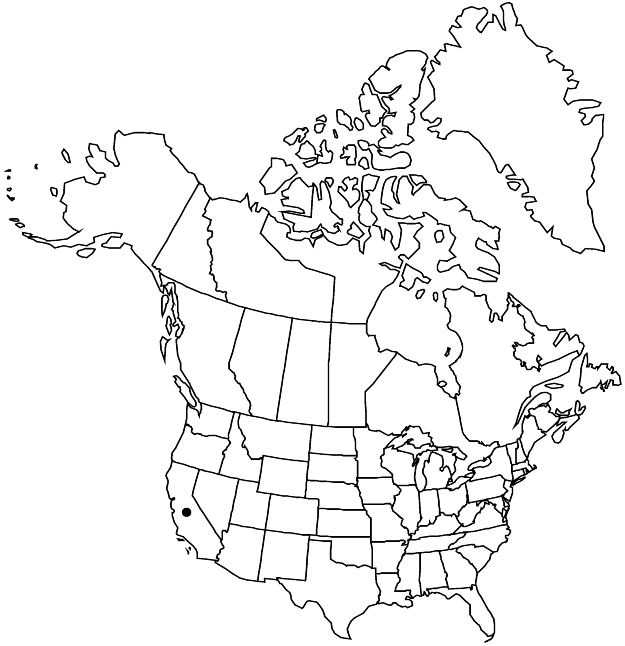Ceanothus ferrisiae
Madroño 2: 89. 1933. (as ferrisae)
Shrubs, 1–2 m. Stems erect, not rooting at nodes; branchlets grayish brown, glaucous, rigid, puberulent. Leaves not fascicled; petiole 1–3 mm; blade flat or ± cupped, widely elliptic to widely obovate, 11–30 × 7–18 mm, base obtuse to rounded, margins not revolute, usually denticulate, rarely entire, teeth 6–13, apex rounded, abaxial surface pale green, sparsely strigillose between veins, adaxial surface dark green, glabrate. Inflorescences terminal, 1.2–1.5(–2) cm. Flowers: sepals and petals white; nectary dark blue to purple. Capsules 7–9 mm wide, weakly lobed; valves ± smooth, horns subapical, prominent, erect, intermediate ridges absent. 2n = 24.
Phenology: Flowering Jan–May.
Habitat: Serpentine soils and outcrops, chaparral, pine and oak woodlands.
Elevation: 100–500 m.
Distribution

Calif.
Discussion
Ceanothus ferrisiae, federally listed as endangered, occurs at a few localities in the foothills of the Mount Hamilton Range northeast of Morgan Hill, Santa Clara County.
Selected References
None.